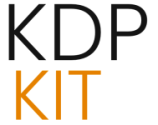Rumble’s Q2 2025: Navigating the Digital Content Currents

Let’s be real, keeping up with the digital publishing world can feel like trying to catch lightning in a bottle. It’s always changing, and Q2 2025 earnings season is no different. We’re seeing a lot of movement, and Rumble is definitely a company that’s grabbing attention. They’ve just dropped their Q2 earnings, and it’s giving us some serious insight into how they’re performing and where they’re steering the ship. For anyone invested in or just curious about alternative video platforms, Rumble’s numbers are a key indicator of the sector’s health. Plus, understanding how they’re trying to stand out and bring in both creators and viewers is crucial to understanding the bigger picture of the digital media market.
Rumble’s Q2 Performance: A Closer Look
Rumble’s Q2 2025 report is out, and it’s a mixed bag, as these things often are. On the upside, they reported a 12% year-over-year revenue increase, hitting $25.1 million. That’s not too shabby, especially when you consider the overall economic climate. The main driver here seems to be their “Audience Monetization” efforts, which brought in $21.47 million, showing that their strategies for making money off their user base are paying off. They also saw some growth from “Other Initiatives,” adding another $3.62 million. However, it wasn’t all sunshine and rainbows. The company’s net loss actually widened to $30.2 million, which is a bit concerning, even though they did manage to narrow their per-share loss slightly. This widening loss, now a trend for the fourth consecutive quarter, really highlights the ongoing challenge Rumble faces in achieving profitability despite its revenue growth. The CEO, Christopher Pavlovski, did point to their consistent 51 million monthly active users (MAUs) as a sign of platform stickiness, even after losing a major creator like Dan Bongino. He also mentioned plans for a Rumble Wallet launch and potential mergers and acquisitions, all aimed at expanding monetization. Despite these efforts, the stock price took a hit, dropping about 9.58% on the day of the earnings report, suggesting that investors are still a bit skeptical, likely due to those persistent net losses.
Key Financial Highlights for Rumble
So, what are the nitty-gritty financial details? Rumble’s Q2 2025 report detailed that revenue climbed to $25.08 million, which is an 11.6% increase year-over-year. But, and it’s a big but, this figure fell short of the analyst estimate of $26.78 million. On the earnings front, their GAAP EPS was -$0.12, missing the expected -$0.07. The net loss widened to $30.2 million, up from $26.8 million in the same quarter last year. On a more positive note, their Adjusted EBITDA loss narrowed to $20.5 million, an $8.2 million improvement year-over-year. It’s clear Rumble is still prioritizing growth over immediate profitability, which is a strategy that can pay off in the long run but certainly raises eyebrows for investors focused on the bottom line.
Rumble’s User Growth and Engagement Trends
One of the most consistent bright spots for Rumble has been its user base. They’ve managed to maintain 51 million monthly active users (MAUs) for the eighth consecutive quarter. This is a pretty significant achievement, especially considering they’ve done it without their largest creator, Dan Bongino. This resilience in user engagement is a strong indicator of the platform’s appeal and its ability to retain users even amidst changes. It shows that the platform has a solid core audience that finds value in what Rumble offers, which is essential for any digital platform looking to grow and monetize.
Monetization Strategies and Advertising Revenue
Rumble’s monetization strategy is a key area of focus for investors. Their Audience Monetization segment is clearly their cash cow, bringing in the bulk of their revenue. They’re also looking to diversify, with plans for the Rumble Wallet and other initiatives. The CEO mentioned that advertising remains central to their strategy, and they expect more inventory and partnerships to drive growth in this area. This is crucial because, as we’ll see, the digital advertising market itself is facing its own set of challenges and opportunities.
Competitive Landscape and Rumble’s Differentiators. Find out more about Rumble Q2 earnings analysis.
Rumble operates in a super crowded space, going head-to-head with giants like YouTube and TikTok. What sets Rumble apart, though, is its positioning as a platform that champions free speech principles and appeals to specific creator communities. They offer creators a more favorable ad revenue share (60% compared to YouTube’s 45%), which is a big draw. This, along with their focus on creator sovereignty and attention retention rather than just virality, carves out a unique niche for them. They’re not trying to be another TikTok; they’re building their own ecosystem, and that distinct approach is what investors are watching closely.
The Broader Digital Media & Content Platforms Segment in 2025
It’s not just Rumble we need to look at; the entire digital media and content platforms segment is undergoing some major shifts in 2025. We’re seeing a definite move towards prioritizing audience quality and first-party data monetization, partly due to the decline of third-party cookies and evolving privacy regulations. It’s a complex picture, with both growth drivers and significant headwinds at play.
Overall Segment Revenue and Profitability Trends
Across the board, the digital media sector is facing a predicted downturn in 2025. This is largely due to decreased programmatic monetization and new privacy regulations, even with Google’s adjustments to its Privacy Sandbox. We’re also seeing a trend where audiences are turning more towards podcasts and video, and trust in news is declining. This means publishers are going to have to get smarter about how they make money, moving beyond just ad revenue.
Key Growth Drivers in the Digital Content Space
Despite the challenges, there are still major growth drivers. The demand for video content continues to soar, and the creator economy is booming, empowering individuals to build businesses around their content. Plus, advertising budgets are still shifting from traditional media to digital channels. New technologies like AI are also playing a bigger role, making content creation and personalization more efficient.
Challenges and Headwinds Facing Digital Platforms. Find out more about digital media content platforms segment guide.
The flip side of growth is, of course, challenges. Competition is fierce, privacy regulations are constantly evolving, and there’s a never-ending need for fresh content. Plus, the general economic climate can really impact advertising spend. We’re also seeing the rise of the “zero-click web,” where AI-driven search results mean users might not even need to visit a website, which can seriously hit traffic and ad revenue. Publishers are being pushed to optimize for search and diversify their revenue streams beyond advertising, focusing more on direct user engagement.
Impact of Macroeconomic Conditions on Digital Advertising
Let’s talk about the economy, because it’s a big one. Macroeconomic headwinds, like inflation and rising interest rates, are putting pressure on businesses. This often leads to reduced marketing expenditures, which directly impacts the revenue of digital media companies. With new tariffs also compounding an already soft demand outlook, CMOs are feeling the heat, and CFOs are tightening their belts. This means digital platforms need to be prepared for a potential pullback in ad spend.
Emerging Trends and Innovations in Digital Publishing
The digital publishing world is like a constantly churning sea of new ideas. Staying on top of these trends is key to understanding where the industry is headed and what opportunities and challenges lie ahead.
The Rise of Short-Form Video Content
It’s no secret that short-form video has taken over. Platforms like TikTok and Instagram Reels are leading the charge, and this trend is influencing how everyone creates content. Shorter attention spans mean content needs to be easily digestible and engaging right from the start. It’s estimated that by 2025, AI-generated content will account for a significant portion of all digital content, allowing for hyper-personalization and efficient content creation.
Growth of Subscription Models and Direct-to-Consumer Strategies. Find out more about RUM stock performance digital media tips.
Many digital media companies are leaning more into subscription models and direct-to-consumer (DTC) strategies. This is a smart move because it creates predictable revenue streams and builds stronger relationships with audiences. It’s a way to lessen the reliance on advertising and gain more control over their business. Authors and publishers are increasingly bypassing traditional distribution channels to sell directly to readers, which gives them more control over pricing, branding, and customer data, plus a bigger slice of the revenue pie.
Artificial Intelligence in Content Creation and Curation
AI is no longer just a buzzword; it’s becoming a core part of digital publishing. From automating content creation and translation to personalizing recommendations and optimizing ad placements, AI is transforming workflows. It’s being used to create articles, blog posts, social media content, and even product descriptions. The prediction is that AI will become a priceless co-creator by 2026, capable of producing high-quality, niche content at scale.
The Evolving Role of Creators and the Creator Economy
The creator economy continues its massive expansion, giving individuals the power to build entire businesses around their content. Platforms are increasingly focused on supporting these creators with better monetization tools, analytics, and community-building features. Creators are essentially becoming media businesses themselves, driven by audience feedback and direct monetization.
Future Outlook and Investor Considerations
Looking ahead, the digital media and content platforms segment is showing a generally optimistic outlook, despite some persistent challenges. For investors, it’s all about understanding the key metrics and navigating the risks and opportunities.
Long-Term Growth Prospects for Digital Content Platforms. Find out more about alternative video platforms growth strategies.
The long-term outlook for digital content platforms remains strong. The continued digitization of how we consume media and the increasing demand for engaging online experiences are major drivers. As internet access expands globally and new technologies emerge, the potential for growth is substantial.
Key Metrics for Evaluating Digital Media Companies
When you’re looking at digital media companies, you’ve got to pay attention to a few key metrics. User growth and engagement are huge, of course. But also look at average revenue per user (ARPU), customer acquisition cost (CAC), customer lifetime value (CLV), churn rates, and how diversified their revenue streams are. Understanding the underlying business model and whether it can scale is also super important.
Potential Risks and Opportunities for Investors
Investors in this space need to be aware of both the good and the bad. Risks include intense competition, regulatory scrutiny, disruptive technologies, and economic downturns that can affect ad spend. On the flip side, opportunities lie in innovative content formats, emerging markets, smart monetization strategies, and strong creator partnerships.
The Importance of Platform Diversity and Resilience
In today’s unpredictable digital world, having diverse and resilient platforms is key. Companies that can adapt to changing consumer tastes, technological shifts, and new regulations are the ones that will likely succeed in the long run. Diversifying revenue streams and building strong communities can really boost a platform’s resilience.
Conclusion: Navigating the Digital Frontier
The Q2 2025 earnings reports, including Rumble’s, along with the broader performance of the digital media sector, paint a picture that’s both complex and fascinating. This industry is all about rapid innovation, tough competition, and constantly evolving ways to make money. As more and more people consume content online, understanding these dynamics is absolutely critical for anyone involved in or just watching the digital publishing world. Ultimately, a platform’s ability to attract and keep users, make money effectively, and adapt to new trends will determine its success in this ever-changing digital frontier. It’s going to be a wild few quarters ahead, that’s for sure! What are your thoughts on Rumble’s Q2 performance and the future of digital media? Let us know in the comments below!








